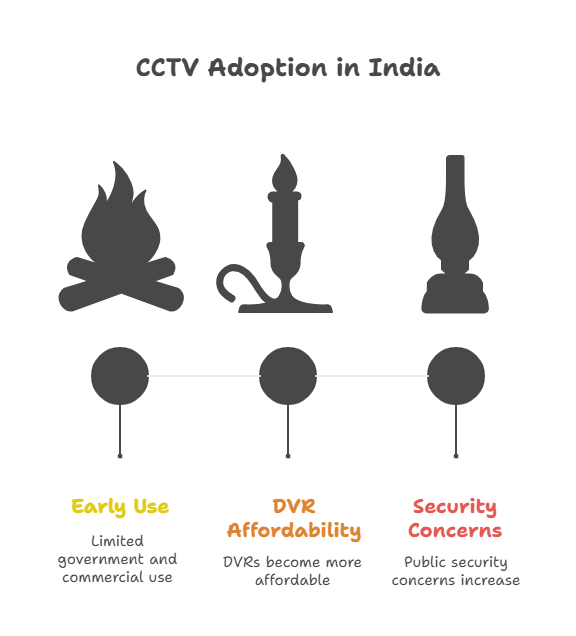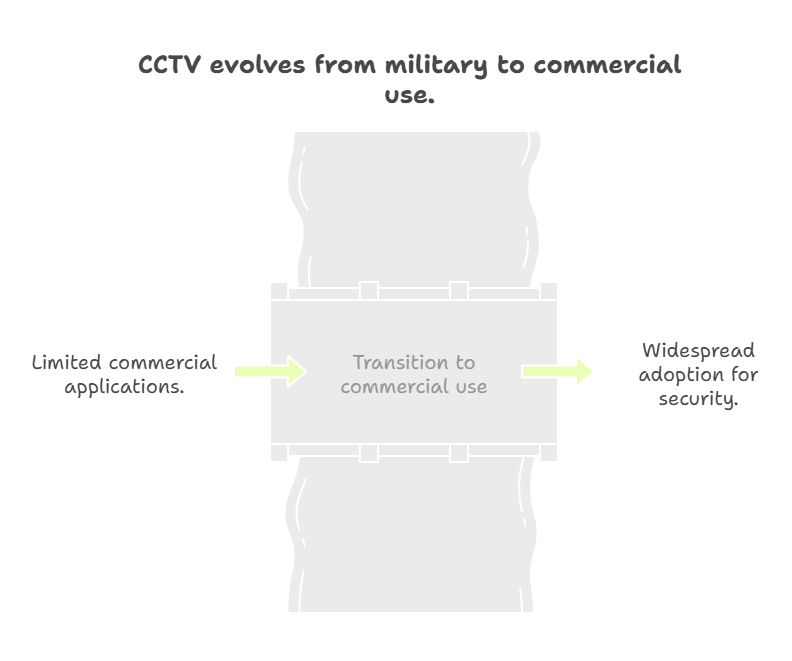One cannot imagine a world without those little watchful eyes tucked above shop counters, peering down stairwells, or silently guarding the outside of the houses. CCTV cameras have so permeated our everyday lives that we often take them for granted-until we hastily try to rewind to check on those few seconds that may have witnessed the dismissal of an Amazon package or the release of the dog.
But when did this security staple arrive in Indian households? The journey of CCTV in India didn’t begin with smartphones and cloud backups. It started quietly, with limited roles and high costs, long before it became the digital watchdog we rely on today. Let’s rewind the tape and trace the story of when CCTV cameras launched in India, and how they found their way into nearly every home.
From Rocket Science to Roadside Watchdogs: A Global Beginning
Before we zoom into India, let’s pan out briefly. CCTV (Closed-Circuit Television) was first invented during World War II by German engineer Walter Bruch, used to monitor V-2 rocket launches. That’s right—what’s now babysitting your front porch once kept tabs on war missiles. Talk about a career pivot.
From there, CCTV trickled into commercial use across the globe. By the 1960s, countries like the UK and the US began using it for traffic control and banking security. But this technology was bulky, tape-reliant, and far from budget-friendly. In short, not your typical Diwali purchase.
The Early Footsteps in India: Limited Eyes, Selective Use
In India, the introduction of CCTV began dully, tiptoeing into consciousness. Around the early 1990s, CCTVs got installed in some very specific places: government office premises, airports, banks, and shopping malls. On some occasions, a couple of municipalities, Chandigarh perhaps, were dabbling with their cameras in parking lots to dissuade petty offenses.
But the high cost of equipment, the need for manual monitoring, and the lack of public understanding meant CCTV was viewed as a luxury or a government utility, not something you’d consider installing in your drawing room.
Security Gets Serious: 2000s and the Turning Point.
Then, when was it much more generally launched in India? The beginning of the 2000s was the major turning point. DVRs came in by replacing those heavy VCR setups, and IP cameras started directly streaming real-time footage to monitors-without the needed miles of tape.
The real game-changer? Public sentiment. After high-profile security incidents, especially the 2008 Mumbai attacks, both government bodies and citizens became more proactive about surveillance. Security shifted from “optional” to “essential.” From metro stations to residential societies, India saw a massive spike in CCTV installations.
And unlike your nosy neighbour, these cameras had a purpose.
The Price Drop that Brought CCTV Home
Like most technologies, CCTV became truly democratic when the prices dropped. With better manufacturing processes, growing competition, and the rise of plug-and-play models, CCTV systems became accessible even to middle-class Indian households.
You no longer needed a tech degree or a corporate budget. All you needed was a smartphone, a router, and a valid reason to keep an eye on your surroundings (or on your over-curious delivery agent).
Let’s face it—between kids, pets, and parcels, homeowners realized they needed an extra set of digital eyes. And so, CCTV left the corporate world and stepped into our living rooms.
Why It’s Treated Like a Normal Camera Today
CCTV cameras are no longer just about catching criminals—they’re multitaskers. Modern families use them to:
- Monitor children and elderly parents at home.
- Check who’s at the door before answering.
- Record deliveries and maintenance visits.
- Even stream live footage of pets (because who needs Netflix when your dog is home alone?).
With mobile app integrations, cloud storage, and voice commands, CCTV has evolved from silent sentry to tech-savvy sidekick. You can zoom in, talk through it, and even rewind time—well, at least the last 7 days of it.

From Luxury to Lifestyle: A New Household Norm
Let’s be honest—there was a time when installing CCTV in your house meant one of two things: you were either rich or paranoid.
Now? It’s as normal as having a Wi-Fi router. From independent villas to 2BHK apartments, CCTV systems have become part of the starter pack for modern Indian homes.
What drove this shift?
- Affordable systems with easy EMI options.
- DIY-friendly wireless models with sleek designs.
- Rising concerns over theft, doorstep fraud, and privacy.
- Society regulations that make security systems mandatory.
The result? CCTV adoption became less of a privilege and more of a practical necessity.
When CCTV Cameras Launched in India
To summarize it all:
- CCTV technology has existed globally since the 1940s.
- In India, early use started in select government and commercial areas in the 1990s.
- But it truly launched into public consciousness and household adoption in the 2000s, after DVRs became affordable and public security concerns grew.
So, the next time someone asks, “When CCTV camera launched in India?”, you can tell them: “Technically decades ago, but practically—right around the time people started trusting tech more than their gatekeeper.”
The Future Looks Smart (and Maybe a Bit Nosey)
Today’s CCTV systems come with facial recognition, motion sensors, night vision, and cloud backups. Some even integrate with AI to detect suspicious movements, analyze traffic, or spot a missing object (if only it could find the remote under the sofa too).
With smart features and sleek designs, these aren’t just cameras—they’re intelligent, silent partners in home security.
Need Help Setting Up Yours? We’ve Got Your Back.
CCTV Camera Installation in Chandigarh — The Tricity’s Best
At CCTV Hub Tech, everything is made easy for you to protect what might really matter. Be it simple surveillance or sophisticated umbrella security, it offers a connoisseur CCTV camera installation in Chandigarh with trustworthy services and solutions built with the future in mind. Secure your space in a smart yet affordable way.

